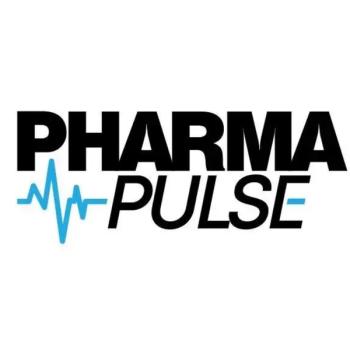
- Pharmaceutical Commerce - December 2022
- Volume 17
- Issue 6
The Value of ML in Customer Targeting
How biopharma commercial teams can leverage machine learning techniques to improve targeting of HCPs and patients
Companies across a wide range industries use machine learning (ML) to peel back layers of data and uncover valuable insights. These insights can help these organizations improve how they engage with their customers. Though biopharma has historically lacked the rich data of other industries, the rise in anonymized patient-level data has unlocked new opportunities for biopharma companies to use ML techniques to improve customer targeting efforts.
Using ML techniques, a drug manufacturer can mine large data sets to identify potential new patients (and prescribing physicians) and more effectively target those patients and healthcare professionals (HCPs). In the end, these efforts can help a biopharma company engage HCPs it may have ignored completely if it relied solely on traditional targeting methods.
Traditional targeting and the limits of human analysis
Traditional targeting techniques involve indexing and ranking a universe of physicians based on the company’s assessment of their propensity to prescribe. Using a mix of data (a company’s own, as well as data on analog drugs), marketing research, and market knowledge, a company can rank physicians based on their potential commercial value.
However, while traditional targeting techniques can help identify top potential prescribers, these techniques fall short when a team has to determine how to allocate finite sales and marketing resources among the lower deciles of physicians. Though these ostensibly lower-tier physicians aren’t anywhere near a company’s top prescribers, they can still offer value and a meaningful return on commercial investment. In a competitive marketplace, it’s well worth the effort to optimize targeting across the entire physician universe.
The problem is that in these lower deciles, the difference between physicians is difficult for even the most skilled analysts to define. And targeting all doctors in this group would require a large amount of resources. Further, differences between these physicians may be hidden deep within a big pool of data, where only a powerful algorithm can uncover them. Traditional targeting methods are inherently limited by the capacity of humans to identify and consider relevant metrics and variables. Digging through this data and uncovering hidden value is the role of ML, which can help a company grab the marginal value it may miss with traditional targeting methods. In biopharma, marginal value can equal significant revenue growth.
Therefore, the most important thing ML can do from a commercial perspective is expand the vantage point of a biopharma company as it surveys its universe of potential prescribers. By uncovering physician characteristics and insights about patient treatment journeys that are hidden in the data, ML techniques can help a company properly allocate resources to areas of commercial opportunity across the full universe of prescribers—from the top ones to the lowest decile.
The power of machine learning
While physicians are the focus of traditional targeting approaches, ML can enable commercial teams to look beyond the physician to the true customer, the patient. The increased availability of anonymized patient-level data enables companies to identify patients who could benefit from their therapies and then find physicians via the patient. Using ML, the team can paint a detailed picture of the patient treatment journey. With this knowledge, they can not only determine which physicians to target but also identify the proper time during the treatment cycle to intervene, raise awareness of the drug, and, ideally, help patients gain access to effective treatment.
For example, patients only become eligible for late-stage oncology treatments after they go through several other rounds of therapy. However, these treatment decisions are made on a case-by-case basis, and there’s no clear marker for when a patient is ready for the next line of therapy. However, ML can help drugmakers understand the pattern of treatment and begin to predict when patients will be ready for a late-stage course.
With all this in mind, the value of ML in physician targeting is clear. However, it’s important for commercial leaders to understand that ML is not the right solution for every company. Nor is it magic. Instead, it’s a computational algorithm that uses data and statistical modeling to make better predictions. ML leverages the power of a computer to do deep mathematical analysis based on the inputs provided by skilled data scientists. When constructed properly, a ML model will enable insight-gathering that goes beyond the surface level. But as with anything related to data analytics, it’s garbage in, garbage out. If a company doesn’t supply the model with reliable data that is relevant to the business questions the team seeks to answer, the model will fail to deliver valuable insights.
ML gains more power as it gains more data. With sufficient data, a drug manufacturer can configure, train, and validate the model. Then, it can put that model into action and use it to analyze, score, and predict. Without enough data, however, the model’s output will be limited.
Data also helps a company continually improve the model. Organizations should never view ML as a one-and-done activity. Instead, they should deploy ML models that are inherently iterative. In particular, with a supervised approach, data scientists train the model with known facts (e.g., key features of the company’s current patient pool) and ask the model to uncover datapoints that match those known facts.
A company, therefore, needs to take a hard look at where it stands in its data journey before committing to ML. A cash-strapped startup preparing for its first launch would be better off using a traditional targeting approach. But a company with a therapy on the market for several years that faces well-established and new competitors may need to expand the breadth and depth of its market penetration. A company in this position would benefit from taking a deeper look at its lower decile prescribers.
Three keys to machine learning success
Once a biopharma company decides to embed ML into its commercial efforts, it should keep the following in mind:
- Embrace iteration. It’s important to go through a regular process of evaluating and recalibrating the model. Every six to 12 months, a company should retrain its ML models. The marketplace is constantly changing, a drugmaker’s patients may be changing, and, as a result, data is always in flux. The team must ensure the ML model captures these changes and continues to produce accurate and valuable insights.
- Adopt a blended approach. An organization shouldn’t toss aside traditional targeting methods while it embraces ML. The optimal approach is often a blend of methods. For instance, marketing research can provide valuable qualitative insight into the patient journey and physician behavior. Additionally, companies should listen to their sales forces and build their local knowledge into any targeting plan. They can complement these methods with ML, which, as discussed, is designed to squeeze untapped value out of a company’s targeting efforts.
- Build teams alongside platforms. There are many software platforms on the market that can help biopharma commercial teams execute ML projects. However, to make the most of these platforms, a company needs access to a team with biopharma-specific data science expertise. Without access to this expertise, an organization will struggle to unlock the full potential of these ML platforms.
ML techniques, when designed well at the outset and optimized properly over time, can help a brand team gain valuable insight into its potential patient universe, those patients’ treatment journeys, and physician prescribing behavior.
About the Author
Huan Tan, PhD, is an Associate Manager at Beghou Consulting.
Articles in this issue
about 3 years ago
Pharmaceutical Commerce - December 2022 Issue (PDF)about 3 years ago
Sustainability: Its Importance Can't Be Ignoredabout 3 years ago
Pharma and RWE: Hitting Its Strideabout 3 years ago
The IRA is Industry's Wake-up Callabout 3 years ago
'Next-Best-Action' for Data Analyticsabout 3 years ago
Patient Data: Solving Ownership Questionabout 3 years ago
Succeeding with Fit-for-Purpose AIover 3 years ago
Creating the Internet of Supply ChainsNewsletter
Stay ahead in the life sciences industry with Pharmaceutical Commerce, the latest news, trends, and strategies in drug distribution, commercialization, and market access.




